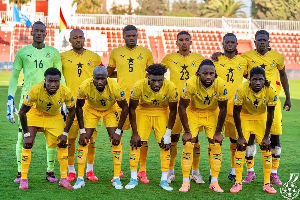…raises fears of power-rationing
Gas flow from the West Africa Gas Pipeline Company (WAPCo) to Ghana has dropped substantially in recent weeks, prompting fears that the country may be plunged into another period of power rationing.
The supply of gas, which has been erratic since flows resumed in August 2013 after a one-year hiatus caused by a broken pipeline, reached an alarming level of 30 million standard cubic feet (MMscf) per day over the weekend. This compares to an average daily volume of 61MMscf per day before the pipeline’s rupture in August 2012.
Although the flow improved to about 45MMscf early this week, it is still below the contractual volume of 123MMscf per day.
In an interview with the B&FT, Kirk Koffi, VRA’s acting Chief Executive Officer, said the Authority whose estimated gas demand is close to 400MMscf per day is very concerned about the poor supply from WAPCo. “Gas supply from WAPCo has been challenging. Over the weekend it was 30 million standard cubic feet; today, it was 45 million standard cubic feet.
It is low, always low. When you ask you are not given any answer; they will tell you they have their own challenges. We do not want to be over-dependent on that even though we have an agreement. We wish we could get the contractual volume, but that notwithstanding we are pursuing other options,” he said.
Already, there have been reports of unscheduled power outages in many places -- although the VRA boss denied that the country is undergoing a power-rationing exercise. The VRA prefers gas to crude oil for running thermal plants with a combined installed capacity of about 841.5 megawatts (MW), while the privately-owned Asogliplant which depends solely on gas from WAPCo requires about 30MMscf to power its 200MW facility.
In 2012, damage to the West African Gas Pipeline created a power crisis that lasted for about a year. The crisis contributed to a slowdown of GDP growth in 2013, estimated at 7.4 percent compared to 7.9 percent in 2012.
Although gas supply was restored in August last year, the VRA still runs a very tight schedule without any reserve margin -- meaning that the shutdown of any turbine could lead to a deficit in power supply.
“We don’t have the required reserve margin of 28 percent to be able to run the system efficiently. If a machine goes down for a planned maintenance or an outage, we should have enough to beat the load -- but we don’t.
As we speak, the water-level at Akosombo is bad because it didn’t get enough rainfall -- we only had about 4 feet or 60 million acre feet flowing into the lake, which is not good. From the lake’s pattern it is likely next year there will be low inflow, which is not too good -- meaning we will have to cut back on hydro power generation,” Mr. Koffi said.
Amid the unreliability of WAPCo’s gas, the VRA and the Ministry of Energy -- apart from counting on additional gas from the Jubilee project -- have started considering importation of Liquefied Natural Gas (LNG) to augment the country’s gas needs. LNG is natural gas that has been converted to liquid form, usually for ease of storage or transportation.
But bringing in LNG will first require the setting-up of a regasification facility. According to the Energy Ministry, government will not directly import, build or own the LNG infrastructure, but rather provide a clear fiscal and regulatory regime for private sector investment as well as engage friendly LNG-exporting governments to establish supply agreements with off-takers in Ghana.
Business News of Wednesday, 15 January 2014
Source: B&FT













